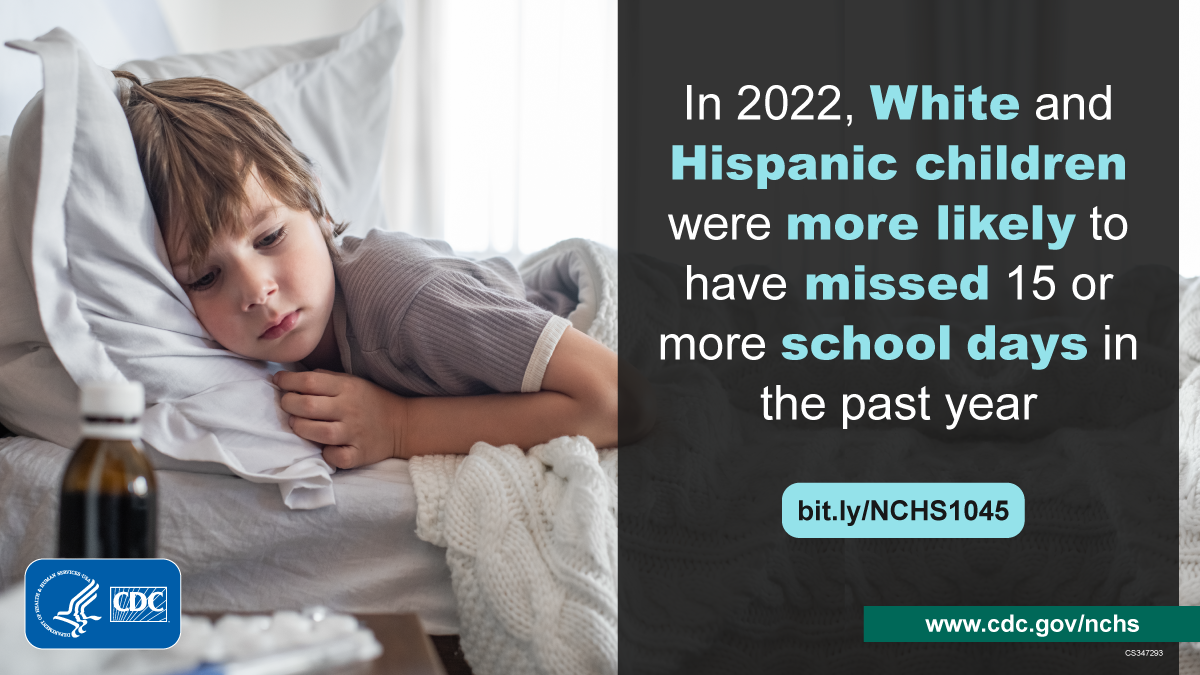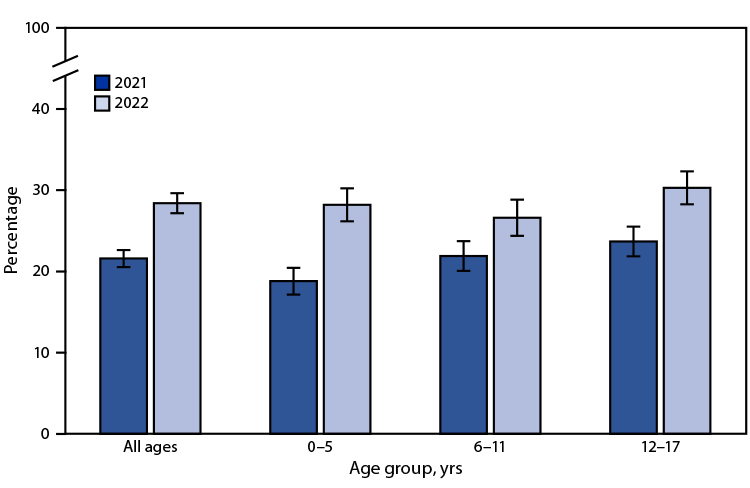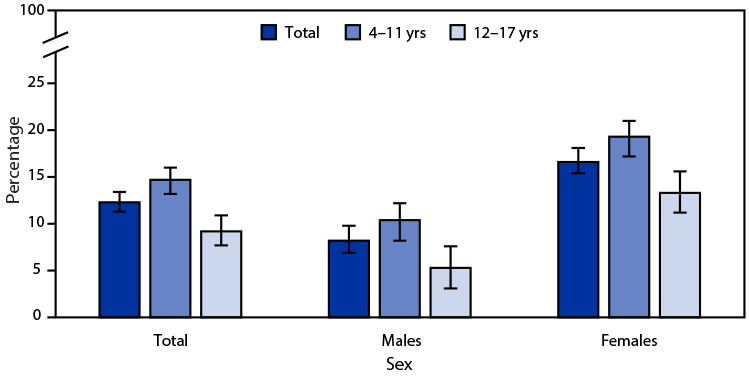Category: adolescents
QuickStats: Rates of Emergency Department Visits for Children and Adolescents with Acute Upper Respiratory Infection, by Age Group — United States, 2021–2022

In 2021–2022, the rate for emergency department (ED) visits for children and adolescents with acute upper respiratory infection was 38.6 per 1,000 persons aged <18 years. The ED visit rate was highest for infants aged <1 year (120.5) and decreased by age, with the lowest rate among adolescents aged 12–17 years (14.4). Supplementary Table: https://stacks.cdc.gov/view/cdc/162215 Source: Read More >
Posted on byQ & A from the Report Author of Chronic School Absenteeism

Questions for Lindsey Black, Statistician and Lead Author of “Chronic School Absenteeism for Health-related Reasons Among Children Ages 5‒17 Years: United States, 2022” Q: What would you say was the most significant finding in this report? LB: There are few national data sources available to examine the prevalence of school absenteeism due to health-related reasons. Read More >
Posted on byQuickStats: Percentage of Children and Adolescents Aged 5–17 Years Who Had Chronic School Absenteeism Due to Illness, Injury, or Disability During the Past 12 Months, by Age Group and Year — National Health Interview Survey, United States, 2019 and 2022

The percentage of children and adolescents aged 5–17 years who had chronic school absenteeism during the past 12 months was higher in 2022 (5.8%) than in 2019 (3.3%). From 2019 to 2022, the percentage of children who had chronic school absenteeism increased for each age group. The percentage of children who had chronic school absenteeism Read More >
Posted on byQuickStats: Percentage of Children and Adolescents Aged ≤17 Years Who Visited an Urgent Care Center or a Clinic in a Drug Store or Grocery Store in the Past 12 Months, by Age Group and Year — National Health Interview Survey, United States, 2021–2022

The percentage of children and adolescents aged ≤17 years who had at least one visit to an urgent care center or a clinic in a drug store or grocery store in the past 12 months increased from 21.6% in 2021 to 28.4% in 2022. This increase was noted for all age groups during 2021–2022. In Read More >
Posted on byQuickStats: Percentage of Children and Adolescents Aged 4–17 Years Who Practiced Yoga During the Past 12 Months, by Sex and Age Group — National Health Interview Survey, United States, 2022

In 2022, 12.3% of children and adolescents aged 4–17 years had practiced yoga in the past 12 months. Children and adolescents aged 4–11 years were more likely to have practiced yoga than those aged 12–17 years (14.7% versus 9.2%). The declining percentages with age were found for both males and females: 10.4% versus 5.3% among Read More >
Posted on byQuickStats: Percentage of Children and Adolescents Aged ≤17 Years Who Had Ever Received a Diagnosis of Concussion or Brain Injury, by Sex and Age Group — National Health Interview Survey, United States, 2022

In 2022, 2.3 million (3.2%) children and adolescents aged ≤17 years had ever received a diagnosis of a concussion or brain injury. Diagnosis of a concussion or brain injury increased with age, from 1.0% among those aged 0–5 years to 2.3% among those aged 6–11 years, and 5.9% among those aged 12–17 years. Percentages were Read More >
Posted on byQuickStats: Percentage of Children and Adolescents Aged 5–17 Years Who Received Free or Reduced-Cost Meals at School During the Previous 12 Months, by Race and Hispanic Ethnicity and Family Income — National Health Interview Survey, United States, 2021

In 2021, 51.6% of all U.S. children and adolescents aged 5–17 years received free or reduced-cost meals at school during the previous 12 months; NH Black or African American (66.2%) and Hispanic or Latino (Hispanic) (64.4%) children and adolescents were more likely to receive free or reduced-cost meals at school than were NH White (42.7%) Read More >
Posted on byQuickStats: Percentage of Children and Adolescents Aged 6–17 Years Who Have Roads, Sidewalks, Paths, or Trails Where They Can Walk or Ride a Bicycle, by Urban-Rural Status and Family Income
During 2020, 88.7% of children and adolescents aged 6–17 years had roads, sidewalks, paths, or trails in their neighborhood or near their home where they could walk or ride a bicycle. Availability of these spaces was less common among children and adolescents who lived in families with incomes <200% of FPL (85.6%) than among those Read More >
Posted on byQuickStats: Percentage of Children and Adolescents Aged 5–17 Years Who Reported Being Tired Most Days or Every Day, by Age Group and Hours of Screen Time
In 2020, 3.5% of children aged 5–11 years and 10.9% of adolescents aged 12–17 years reported being tired on most days or every day. Among adolescents aged 12–17, the percentage reporting being tired was higher (12.0%) for those who reported >2 hours of screen time (in addition to that for schoolwork) per weekday than for Read More >
Posted on byQuickStats: Percentage of Children and Adolescents Aged 0–17 Years Who Have Experienced a Specified Stressful Life Event, by Type of Event and Poverty Status
In 2019, 20.7% of children and adolescents in families with incomes <200% of the poverty threshold and 12.6% of children and adolescents in families with incomes ≥200% of the poverty threshold had experienced at least one specified stressful life event. Children and adolescents in families with incomes <200% of the poverty threshold were more likely Read More >
Posted on by
